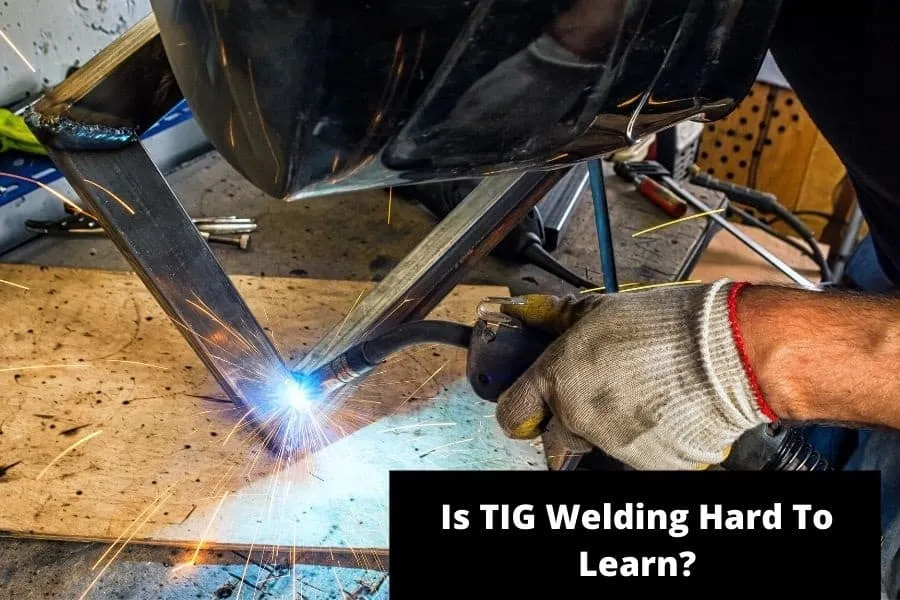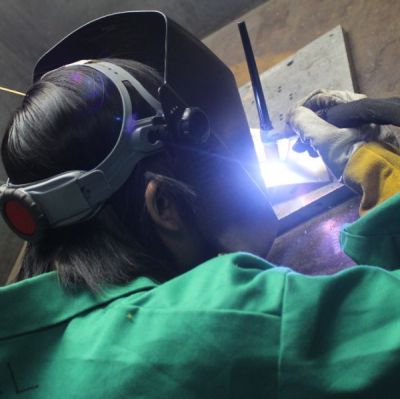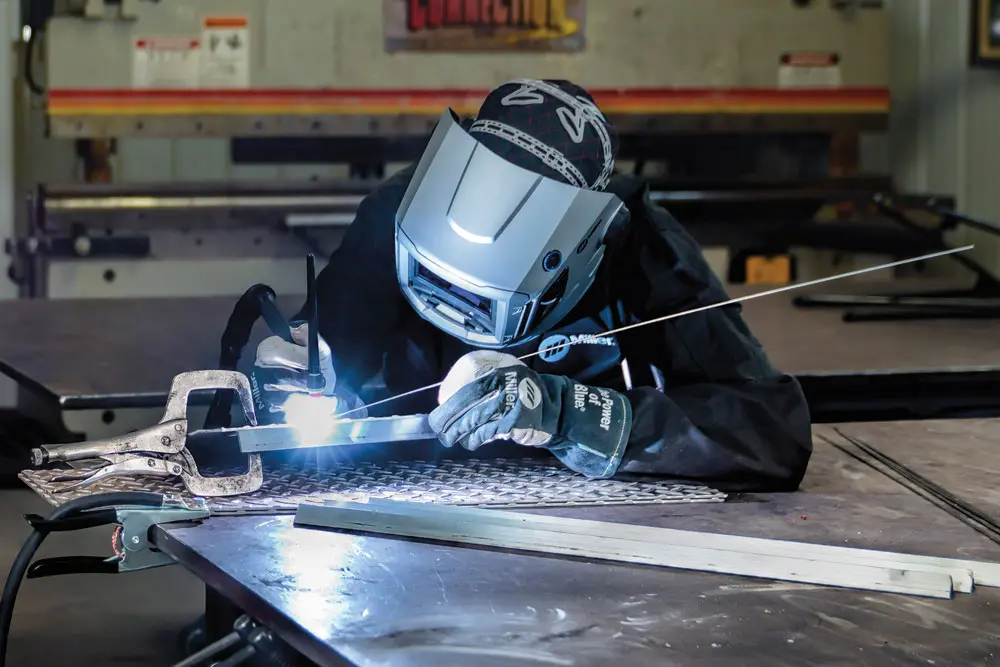Is Tig Welding Hard for reducing the rewarding welding process? TIG welding classes are often the last course the students take while in welding school. When properly mastered TIG is the most rewarding welding process out there. Success doesn’t necessarily happen overnight, and newbies will need some work to improve their TIG skill set.
We recommend attempting the play with one or two sticks of MIG before jumping in the TIG ball. Once the student becomes proficient at stick and MIG, TIG will become a little easier and TIG is very fun to teach once mastered. We offer a detailed guide to learning TIG and using a TIG machine.

Contents
FAQS
Is Tig Welding Hard?
Yes, of course, Tig Welding is Hard. It takes a lot of practice to learn proper technique and be able to maintain a steady pace without breaking the arc.
I think so if you really want to get good at welding there’s no better way than practicing on your own with one of these machines when you do eventually buy one or find access to one. Don’t forget about safety, sometimes it can take hours just learning how to set it upright. Remember when making tig welds to keep your filler rod on the outside of your puddle!
I think it is important for you to realize at this point that there are many different kinds of tig welding machines that you can buy and use in your workshop. There are manual handheld models and very advanced computerized models with digital readouts and so forth… But the short answer is yes…TIG welding *can* be hard. However, if you have never tried it before you will probably find that it is not as scary or difficult as you originally thought…and they do make learning how to do it easier.
First Time Use A Tig Welding
The first time you use a tig welding machine will probably take around an hour or so just to get the hang of things like cranking up and down the machine, lighting up your torch, adjusting your amperage etc… TIG welding is not as easy as some processes. You need to be able to hold high heat in the rod for very long periods of time without getting burned by the heat *exactly* where you need to have it. If you are too slow with heating up your work piece (which can happen if you are trying not to burn thru), then your weld won’t have enough metal in it.

Or worse yet, it will overheat and ruin your project completely! On top of that, you cannot blow the rod or the weld will be blown out completely. There are lots of little tricks that you learn, and I would suggest getting some training before just jumping into it if possible (even though we will probably all recommend doing it without any distractions).
After learning how to tig weld for a few hours, I was able to make decent looking welds on thinner plate steel (~3/16″), but anything over 1/4″ and higher would definitely need more practice. It’s not hard to get started with Tig welding, but this is definitely not one of those processes where someone with no experience can pick up a Tig machine and get good results right away. Welding is a process that takes lots of practice to get good at, whether you’re using a TIG or MIG welder.
Beed Troubles/Contamination
For early users, they’ll find their TIG beads will be uneven and will change drastically. TIG welding also needs very clean metal. The characteristic of a TIG arc doesn’t permit it to penetrate into other contaminants. For this to be accomplished the metal is prepared by removal of rust, oil, and mills scale. In Aluminum TIG it must be properly brushed with a stainless steel brush.
The video by weild.com shows the easiest way to prep material for construction. Learn how angle grinders can be used for beautiful beads. Finding time constant and having a well-balanced fed rod might be tough but once you find that rhythm you’ll have a good time.

Dexterity/Coordination
TIG welding requires steady hands movement and requires two hands to work simultaneously. The most primitive TIG arc start is known as scratch start This means you can rapidly press tungsten to an aluminum plate and then lift up into arc mode to start. The lift is the best for beginner however the lifting and scratch start processes are nice skills to be had. With lots of practice this complex task of TIG becomes a regularity – and you won’t even want to think about. Some beginners may proceed faster than others but if you practice constantly the quality welds will come but you can get used to it relatively fast.
TIG welding at Crucible
TIG welding is often described as requiring the use of a sewing machine. It involves both hands and foot pedals. The Crucible is a comprehensive school for both intermediate and advanced welding with four types of welding: oxyacetylene gas welding, arc or stick welding, MIG welding and TIG welding. Use an electrical arc to create a heat for melting and joining parts in metals and use heat to cut, braze and welding them. You could use it to weld iron or steel. It uses heat also to remove rust or scale from metals. It helps for the removal of rust from metals and tightening corroded nuts and bolts.

TIG welding applications
The TIG welding process is the most flexible type of welding in terms of the metals possible. It is usually used to make products that include metals such as steel, bronze bronze, titanium copper aluminum stainless steel, chrome nickel alloys magnesium brass or even gold. TIG is a valuable skill that has incredibly extensive applications. It’s practical and beneficial process.
The machine
If you want a very low-cost entry-level machine you can use easily, this one is a good choice. The most expensive machines are DC only which is fine for most metals but won’t work for aluminum or magnesium. Circuits containing high frequencies allow that arc to form without contact between weld or electrodes. If the weld does not have high-frequency pulses then the electrode may have to be scratched before arcs can be formed. Scratch starting the electrode may easily contaminate it and lead to considerable problems with your weld. Most machines in the mid to higher range should use a DC and AC DC input, but not metals such as aluminum and magnesium.

TIG vs MIG welding
TIG welding involves using tungsten electrode that produces voltage arc between the torch and the substrate material. TIG produces more precise welds on a variety of metals while MIG is restricted to thicker metals. MIG employs a wire mesh wire electrode which moves consistently on a spool in the welding machine. The TIG welder uses a pedal controlling arc length, using a hand providing the sacrificial rod, while the other hand aiming the electrode at the working surface. TIG is a slower process to learn than MIG due to the longer learning journey and the fact that TIG has no patience for most typical mistakes that can occur.
Welding aluminum in the wrong polarity/adjusting balance

TIG welding in AC allows an electromechanically active electrode (ELC) to blast away aluminum oxide while electromechanically activated electrodes. When you see some brown oxidation or flakes of black or tan that look like pepper in your weld pipe (Figure 2B) reduce the balance setting which increase the time in EP or the time spent for. Too much EP may produce excessive ball titering which may have too much etching. A lot of these issues occur at. Do not begin welding until the puddle has the appearance of a shine dot indicates that the oxide has been removed.
Learning Of Tig Welding
If you can’t purchase your own tig welding equipment, then look for seminars and classes in your area. There’s usually always someone willing to help out either for free or for a fee.
In order to learn the basics, try reading one of the many books about Tig welding. Or you could find some friends who already weld and ask them if they would teach you how it works, just don’t expect them to just hand over their favorite machine 🙂
Anyways, as with any other form of welding…practice makes perfect! It most certainly isn’t easy but once you master it - it’s pretty fun to do.
Other than that I’d have to say tig is one the most enjoyable types of welding, especially with an AC/DC machine. And don’t worry about not having a transformer or expensive unit. You can take this baby out into the field and practice with it all you want. When you get good enough go ahead and buy a real one!